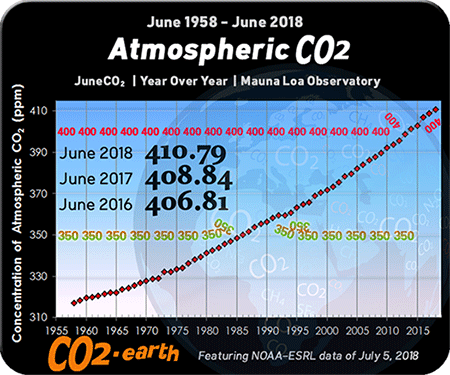 It's going to feel like Sisyphus around here so long as we think we can push that rock over the top if we'll just use more energy. Image by litmuse via Flickr
It's going to feel like Sisyphus around here so long as we think we can push that rock over the top if we'll just use more energy. Image by litmuse via Flickr
Steiner's book agrees on the basic premise, that the end of oil is bound to come sooner rather than later (we can disagree on the exact date oil extraction peaked, but its arrival at some point is indisputable) and that we had better prepare for the day of reckoning.
Reading $20 Per Gallon makes us realize how contingent our way of life is, and how uncertain its future prospects are. Connecting each phase of the price increase with a particular form of reliance, Steiner tries to move us from denial to acceptance. We will not be able to live the way we have been for the last century, driven by the stored excess energy of oil, built up over millennia. No new form of energy currently on the horizon competes with oil for its cheapness, efficiency, ease of use, and broadness of applicability. At the same time, cheap oil has engendered a variety of grotesque behaviors, from the way we eat our food to how we move products around the world, that make no sense in the absence of underpriced oil.
Steiner wishes to posit a rational transition, driven by market signals, as consumers, businesses, and governments make appropriate choices. For Kunstler, social and political unrest of the highest magnitude is bound to come with the end of oil. The reader can decide, based on the following arenas of choice, which is more likely.
- At $4, we will begin to accept that there remains little easy-to-get oil.
- At $6, the SUV will be dead, America's motoring habits will change, and we will become healthier as we get around more on foot.
- At $8, the "skies will empty," as airline travel will again become a luxury, and the major American "dinosaur" airlines will go out of business: "Southwest and JetBlue will become the dominant domestic airlines in an age of $8 gasoline," thriving on their flexibility. Families will concentrate closer together, and Las Vegas as we know it will "go bust."
- At $10, after a period of experimentation with hybrid cars, the electric car, 100 years after it first came on the scene, will rule our thinning traffic. Electric cars still face a lot of technical problems, and Steiner discusses Israeli entrepreneur Shai Agassi's company Better Place, in the forefront of thinking about the infrastructure necessary to make electric cars a reality. At the $10 price signal, plastics made from organic sources--of the kind MIT's Dr. Oliver Peoples is pioneering--will start making sense.
- At $12, the suburbs will lose their charm, and cities will become magnets for fleeing householders. Urban density, such as New York's, will become the model for less dense cities around the country. South Korea's New Songdo City is an example of a sustainable dense urban conglomeration, likely to become a model around the world.
- At $14, Wal-Mart will end, Main Street in small towns will revive, and American manufacturing (defeated for so long by the ease of container trade) will return to prominence. We will use materials more sensibly; lacking asphalt, a byproduct of oil, which we use for rooftops and to pave our highways, we will turn to metal and concrete.
- At $16, the way we eat will fundamentally change. Farms will go local. Steiner points out that having long ago exhausted the natural fertility of our soil, what we essentially eat is oil, since fertilizer consists partly of the hydrogen molecule stripped from hydrocarbons.
- At $18, high-speed rail will connect America's cities, and the pernicious effects of policies biased in favor of the heavily subsidized auto industry will finally cease.
- At $20, the alternative energy choices will be stark and irrefutable--nuclear power will stand out as the most viable option. [Magical thinking warning here: the cost of nuclear power, like all technologies, sits atop the cost of the fossil fuels that make the other technologies possible. Uranium doesn't mine itself or enrich itself and nuclear plants take a tremendous amount of energy up front. Good analysts suggest that an all-out nuclear building binge is an elaborate way to run in place, with virtually all the energy from the first plants going to support construction of the later ones . . . no net energy increase made available to society at all, in fact, with almost the entire carbon emissions from the nuclear lifecycle crowded up near the beginning of the construction boom -- just when we can afford it least (i.e., before massive emissions reductions have occurred).]
In essence, Steiner is talking about piece-by-piece rebuilding of existing infrastructure in every realm of activity, to smoothly incorporate new non-fossil-fuel-based technologies. It perhaps stretches faith in our capabilities to allow for such a rational transition. The shift Steiner is discussing is akin to Kunstler's small-scale, local, manual economy, even if Steiner doesn't want to let go of the idea of cars and planes and international trade and differentiated cuisine.
It is revealing that Steiner stops at $20. If the end of oil becomes discernible to everyone, most likely the shift up in prices will not be incremental, but abrupt and exponential. And it doesn't have to stop at $20. Oil is the most precious commodity we possess, if we are bent on maintaining our current form of life. Even at $20 it would be close to free, based on its actual value. What happens when oil is at $50 or $100 or $1,000 a gallon? Obviously, rationality is out the door then, and a more gruesome survivalism sets in, the kind Steiner stops short of discussing.
We can't lose our oil and yet benefit from its applications, in a more beautiful version of what we have now, only somewhat modified. Kunstler went at the problem bluntly, presenting a scenario so horrific (and so inevitable-seeming) that the mind still has difficulty grappling with it. It takes fossil fuels to power newer technologies; Kunstler addresses this problem head-on, and finds no solution within our existing scientific capabilities. Most of the alternatives bandied about, as both Kunstler and Steiner agree, are not realistic, or can only meet a small proportion of our energy needs, even at a drastically reduced level of consumption. For Steiner, nuclear energy will be the savior; it's a huge bet to place, on a technology with its own well-known problems.
Steiner hopes that policy choices will mitigate the inevitable crash. His timely warning is all the more poignant for the degree of human wisdom it seems to call upon.

![Reblog this post [with Zemanta]](http://img.zemanta.com/reblog_e.png?x-id=38de2943-bb05-4cfe-90bc-ff59775ede4b)




No comments:
Post a Comment